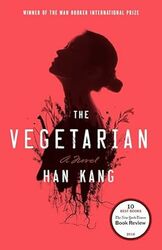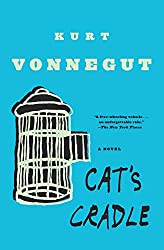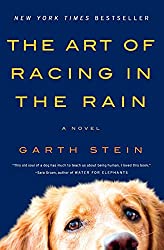
Rating: 8.0/10.
A fairly short novel, about 120 pages, written by a South Korean author who won the Nobel Prize in Literature in 2024. It centers around a young woman, Young-hye, and is split into three parts that examine this character from multiple perspectives. It is hard to say what this novel is about, and it’s quite dark, exploring themes of mental illness, human psychology, and female repression.
The first part is from the perspective of Young-hye’s husband, Mr. Cheong. He is a career man and the book starts when his wife announces that she had a dream and decides to become a vegetarian, refusing to eat meat, it causes problems with the immediate family. Since being vegetarian is extremely rare in this society, Mr. Cheong gets his wife’s family to try to intervene. As his wife becomes more and more reserved and fails to obey social norms, she stubbornly continues to refuse to eat meat. Her family intervenes and tries to get her to snap out of it, but she still refuses and eventually hurts herself with a knife.
The second part is from the perspective of Young-hye’s sister’s husband, an unnamed man who works as an artist. He develops an attraction towards Young-hye despite her unusual tendencies and is captivated by her birthmark. He tries to pursue Young-hye and convinces her to model for him in his studio. This part contains the most sexually explicit scenes, where he paints leaves on her body and films her naked and also gets one of his friends to also be naked in the video. When he realizes that Young-hye is sexually aroused by having flowers and leaves painted on her naked body, he asks his friend to engage in sexual intercourse on video, but his friend refuses. Consequently, the artist gets flowers and leaves painted on his own body and goes over to Young-hye’s place to have sex with her. This section ends when his wife discovers them both naked and calls the police.
The third section is from the perspective of In-hye, Young-hye’s older sister. She has always tried to take care of her younger sister, growing up as the older one, and continues to take care of her now by putting her into a psychiatric hospital. At this point, we witness Young-hye’s further descent into madness. Instead of just not eating meat, she withdraws completely from the world, refuses to eat anything at all, and even refuses the medicine given to her by her doctors. She becomes thinner and more confused, expressing a desire to become one with the trees while running around the forest naked. She maintains her stubbornness until the end, to the point of near death after refusing to eat for many weeks.
One theme is how each character treats someone with clear mental illness. Mr. Cheong quickly abandons her – even during the beginning stages when it is mild and Young-Hye only refuses to eat meat but otherwise appears mostly normal, her husband views her as unreasonable. Soon, when her symptoms become more severe, he files for divorce and goes on with his own life. The second artist man takes advantage of her – he is sexually attracted to her and has no qualms about taking advantage of her mental situation in order to have sex, even though he knows it is wrong and feels guilty about it, he does it anyway because she allows herself to be taken advantage of and does not put up much resistance. In-Hye’s role is protecting her younger sister and trying her best to treat her well despite the challenging circumstances, making the long journey to the hospital to visit her younger sister. These three sections each display different ways that people’s attitudes towards the mentally ill.
Another theme is the attitudes of men towards women in society. Both Mr. Cheong and the artist in the second section expect a wife to do the housework, such as making food for him and taking care of the child, while the men share none of the household and family responsibilities. In both cases, the husbands casually rape their wives at various points, and they consider this not particularly unusual; it is done without much guilt and their wives in both situations accept that this is just the way it is. Both husbands are attracted to the other wife and fantasize about their wives’ sisters, even though only the artist actually pursues his wife’s sister.
In the three sections, we never directly get to know the thoughts and motivations of the main character, Young-hye, and why she does the things she does; we only see the interpretations of other people who observe her. Because she doesn’t talk much, her own intentions are left ambiguous. However, in the final section of the book, it is revealed that the two sisters have had a troubled childhood, with their father mistreating them. The two sisters respond in different ways: Young-hye withdraws and becomes passive, accepts everything that is done to her, and develops a passive personality where she has no control over her own life, and possibly her rebellion, starting with becoming vegetarian and growing more extreme, is a response to her own lack of control. In contrast, her older sister, In-Hye, does all she can to fulfill her responsibilities, despite her own internal frustrations, which she covers up by having a successful career. By the end, we see that she is also near her breaking point and sympathizes with her younger sister’s actions.



